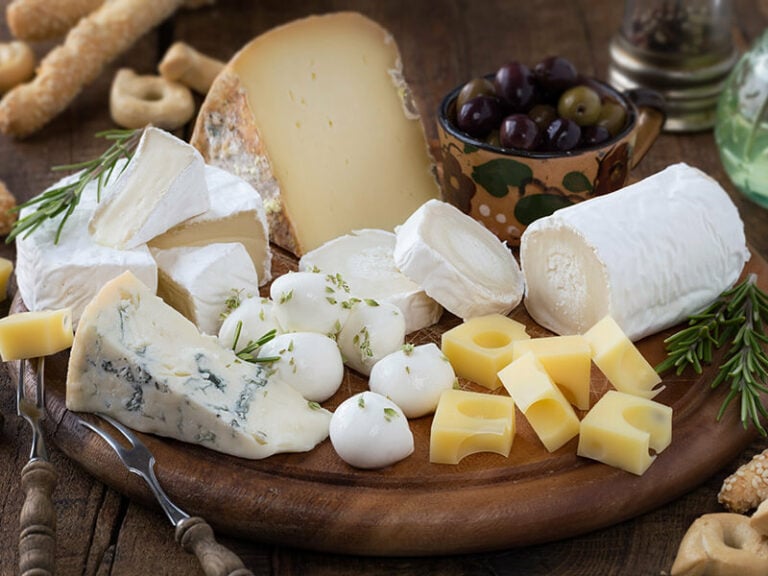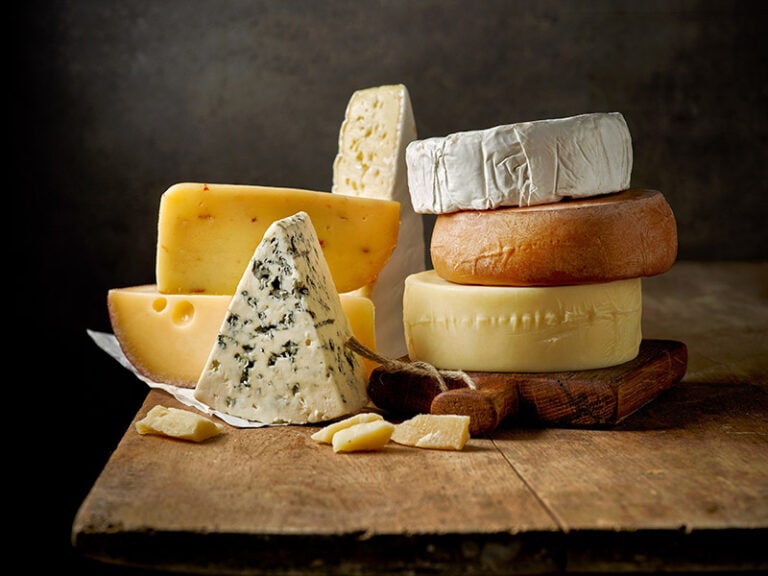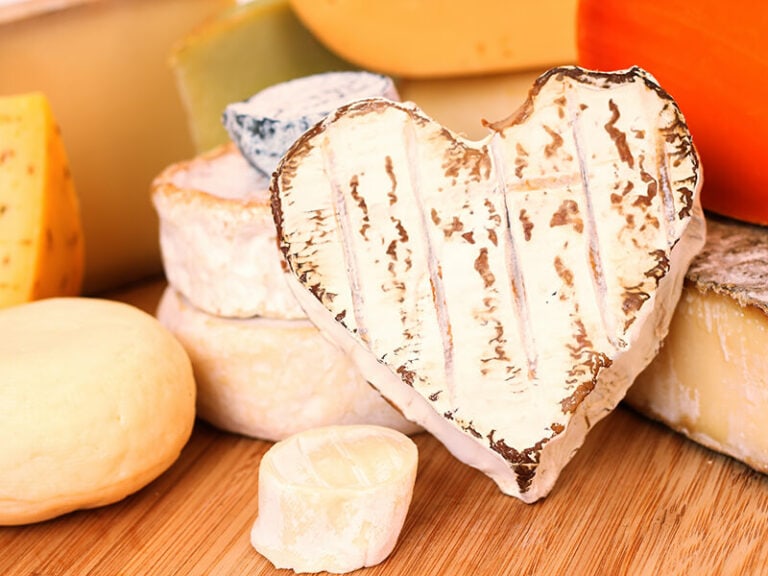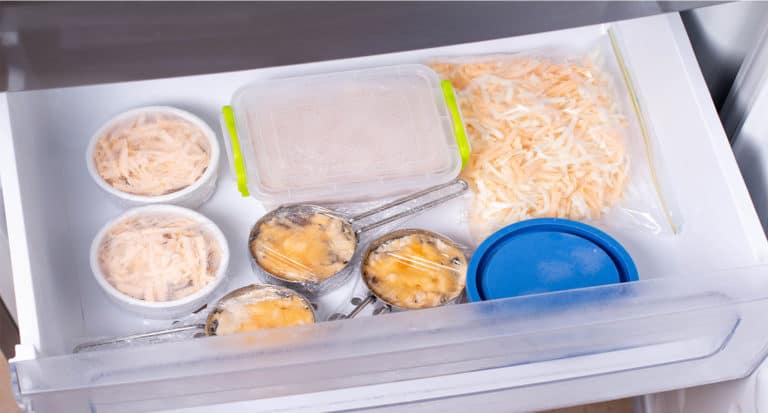Hey, salad fans, have you been looking for the best cheese for salad recently? There are over 1800 kinds of cheeses in the world. This makes choosing them seem like a little whelming, doesn’t it?
However, the good news is I’m here to help. This article covers all the essential knowledge to help your journey to the best cheese for salad become much easier. Tips and tricks to store your cheese properly are packaged as well. Let’s waste no time – begin right now!
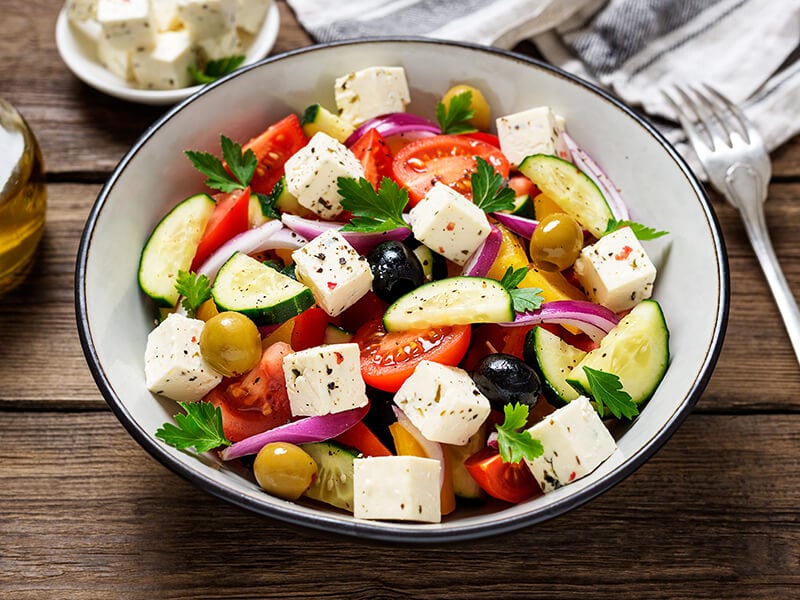
Why You Should Add Cheese To Salad
Before diving deeper into the best kinds of cheese for salads, let’s take a look at some reasons why cheese should be an essential part of your salads.
Enhancing The Tastes
Cheese is one of the most popular ingredients to pair with salads. The flavor and texture of cheese vary from type to type. This means you have numerous options to add flavors to your favorite salad.
In addition, it also helps balance the overall taste of your salad. Some combination of cheese and other ingredients, such as vegetables, fruit, and nuts, can also upgrade the dish’s flavor to another level.
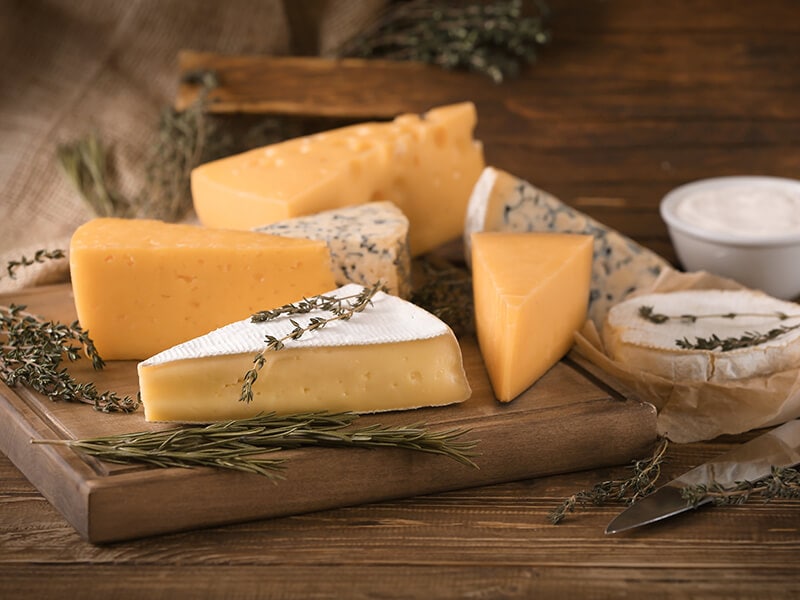
Adding Nutrients
Another reason for adding cheese is because of its nutrients. Cheese is rich in calcium, fat, protein, phosphorus, and vitamins A and B12. When you add cheese to your diet, you can gain several health benefits.
Calcium in cheese, for example, may benefit your bones, teeth, blood pressure, blood clotting, and wound healing. Certain cheese also includes conjugated linolenic acid (healthy fat), which can help you fight chronic diseases like obesity and heart disease.
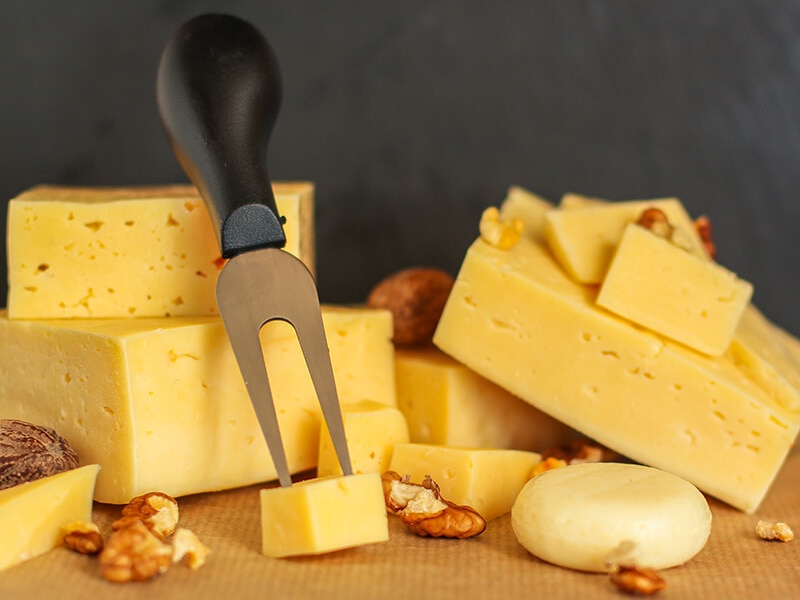
How To Choose Cheese For Your Salad
The flavor combination is a decisive factor in determining the right cheese for your salad. While there are various kinds of cheese to mix with your salad, not every cheese will fit well with your dish.
The key here is selecting cheese that can simultaneously synergize with your salad and improve its overall flavor and texture. For example, a salad with crunchy vegetables will benefit from melting cheese, while slightly salty cheese can go well with sweet and savory salads.
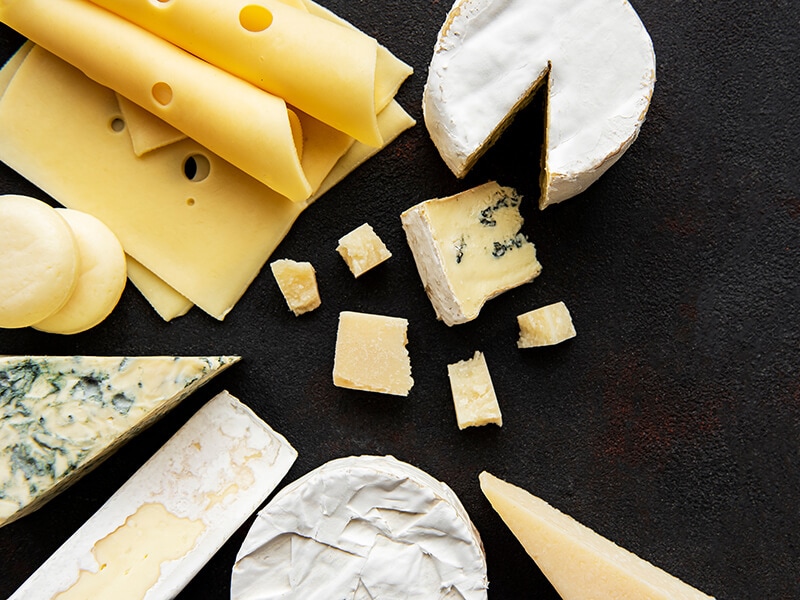
The Best Types Of Cheese For Your Salad
Based on the criteria mentioned above, these are some of the best cheese varieties to combine with your salad. However, keep in mind that when I say “the best”, it doesn’t mean that these cheeses will absolutely fit well in all your salads.
Everyone has their preference. So, after learning about the characteristics of each kind of cheese, feel free to choose the right one for yourself. For a summary, look at the table below.
1. Parmesan
Parmesan has a long history of use, dating back to the Middle Age. This Italian cheese is made from cow’s milk, salt, and rennet. The cheese is then left for at least 12 months to fully develop its flavor and texture.
This cheese is an excellent addition to salads due to its salty, fruity, and nutty flavors. While it can pair well with various salads, it’s most well-known for romaine lettuce and arugula salads. To bring out the best flavors to your greens, you can grate and toss Parmesan before adding it.
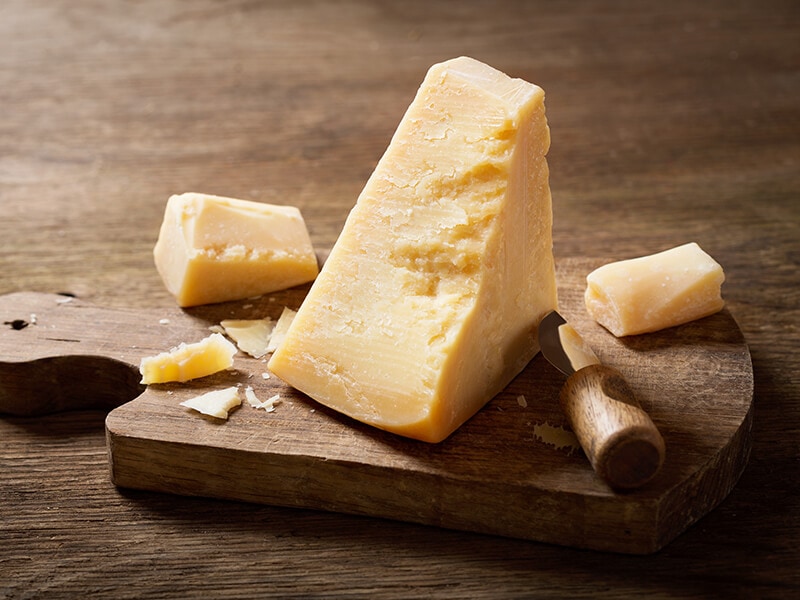
2. Mozzarella
Mozzarella is southern Italian soft cheese using buffalo’s milk as the primary ingredient. Due to its milky and mild flavors, this variety can go well with almost every kind of salad, particularly Caesar, Caprese, Panzanella, tomato, and lettuce salads.
Its low melting point, along with a soft and sticky texture, is also a bonus. This allows it to be easily melted to complement other crunchy vegetables in your salad. Aside from greens, this cheese can also go with pizza, bread, and meat.
Mozzarella comes with lower sodium and calorie amounts than many other kinds of cheese. In addition, probiotics in this cheese positively impact gut health and the immunity system. For delicious and healthy cheese for salads, it’s the way to go.
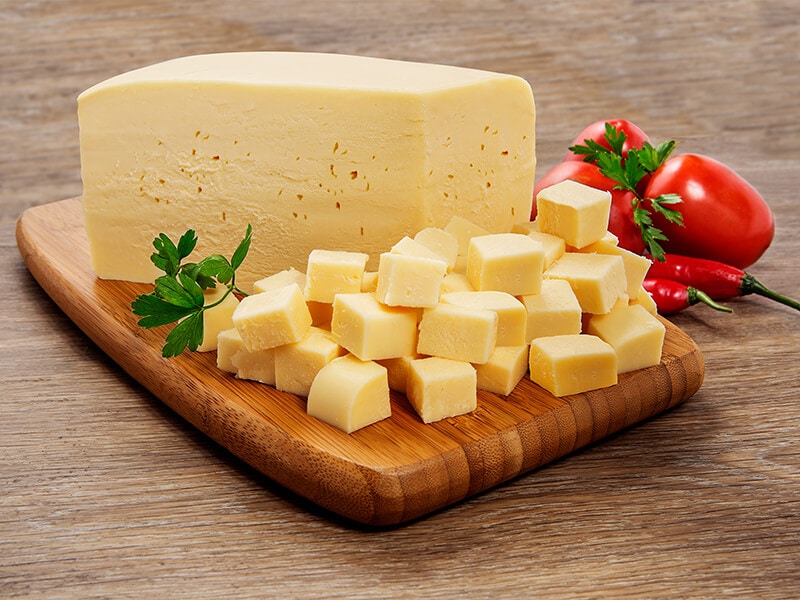
3. Feta
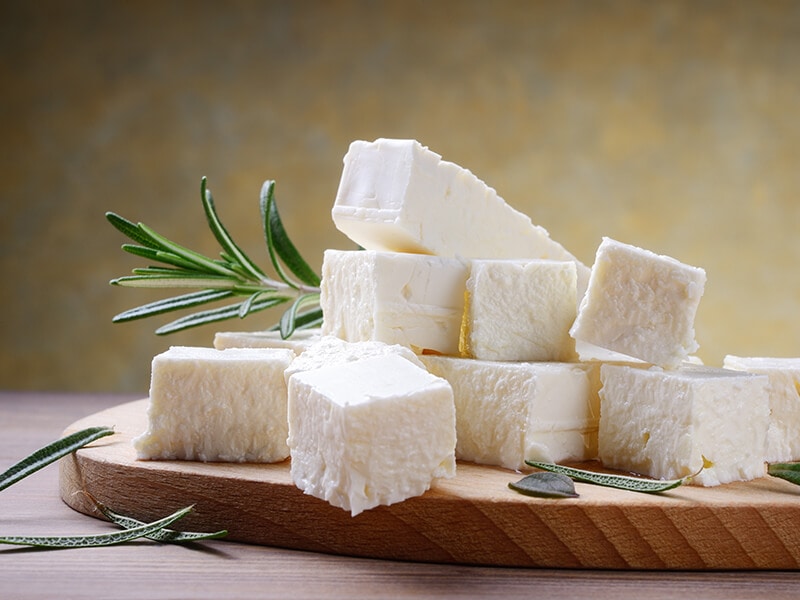
Feta is one of the most popular Greek cheeses. Though it’s mainly made from only sheep’s milk, it sometimes also includes the milk of goats or cows (30% at maximum). Soaking the cheese in brine is a vital part of the production. As a result, feta ends up with tangy, salty, and rich flavors.
If you use this cheese for your salads, you can’t go wrong because it goes well with every salad recipe. Slightly aged feta is the best to add to your dishes. Due to its firm texture and flavor, this variety can be used in various ways to enhance the flavor of your salads.
Its flavor also allows it to be common in a wide range of dishes, such as salads, sandwiches, whole wheat parathas, pastries, and omelets. However, nothing can compare to the combination of Greek salads and feta. This cheese truly upgrades the overall taste and texture.
Apart from adding it to other dishes, you can also eat it alone. For this approach, let’s try consuming it with some olives, olive oil, and oregano. This simple dish will be a good choice for starting your day or serving before the main meal.
Master your skills in making Greek salad with this comprehensive guide.
4. Gouda
Gouda, mainly made of cow’s milk, is one of the most popular cheeses in the world. It’s commonly used in fruit and nut salads due to its sweet and nutty flavors. To take advantage of this cheese, you should combine it with apples, pears, melon, cherries, walnuts, pecans, etc.
In addition, its creamy smooth texture can make your bite satisfying, while the golden color will make your salads more appealing to eat. To add this cheese to your salads, you can prepare it as either slices or cubes.
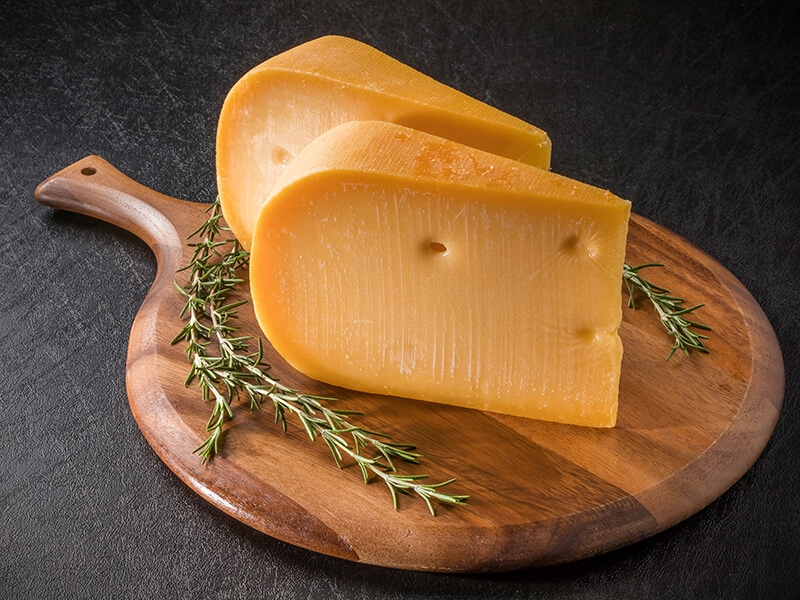
5. Swiss Cheese
Switzerland is home to over 450 kinds of cheese, which are often grouped into Swiss-type cheeses(1). The most popular Swiss-type cheese in the world is Emmental, also known as Swiss cheese. It’s easily recognized by its pale yellow color and holey appearance.
This cheese has nutty, slightly buttery, and fruity flavors and a low melting point. For these reasons, it has become a common ingredient in various sandwiches and salads. But it’s most well-known as a classic ingredient in Wurst salad (Swiss or German sausage salad).
Cashew salad and Swiss cheese salad with strawberries are some common dishes you can make with this cheese as well. If you want to add mushrooms to these dishes, the taste will be satisfying too.
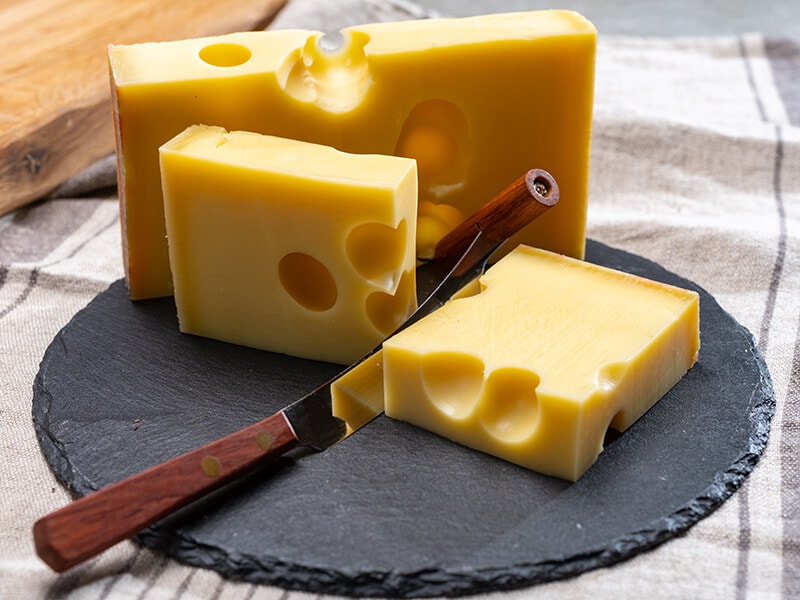
6. Blue Cheese
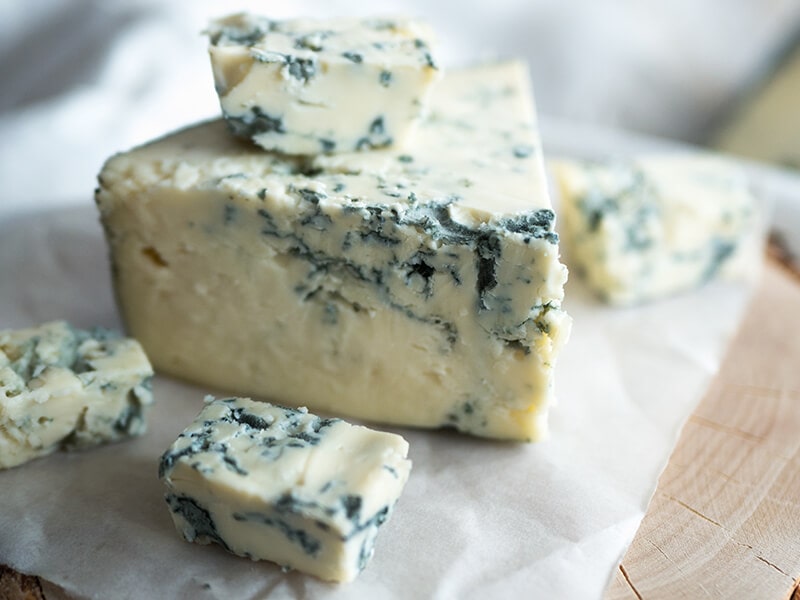
What makes blue cheese (also known as bleu cheese) so special is the mold Penicillium in its ingredients. When it comes to mold, what people usually think is spoilage. However, that’s not the case in this cheese, as the mold is edible and gives it a blue color.
Blue cheese’s tangy, salty, and sharp flavors can be a superstar in pear walnut salad. Other ingredients you may want to try with this cheese are avocado, fig, apple, and dried fruits. In addition, you can toss small cubes of cheese to improve the taste of meat-based salads.
Because of its great accompaniment to bacon, blue cheese is also a primary ingredient in a classic Cobb salad.
Find out how blue cheese is made in a food factory.
7. Halloumi
Halloumi is a type of cheese that originated from the island of Cyprus. Traditionally, it’s made from the milk of goats and sheep. But in recent years, cow’s milk is increasingly common in the production of halloumi due to its lower price.
This semi-hard cheese comes with a tangy flavor and salty taste due to being kept in brine. This makes it an excellent choice for combining vegetables, herbs, and grains in your salad, especially Greek and fruit salads.
This cheese can be eaten raw in multiple forms. For example, slices or cubes of halloumi are often served with watermelon and fresh mint. However, the best way to use this cheese is to grill and fry it.
Due to its high melting point, halloumi will not be melted easily, which in turn provides a better taste to your salad.
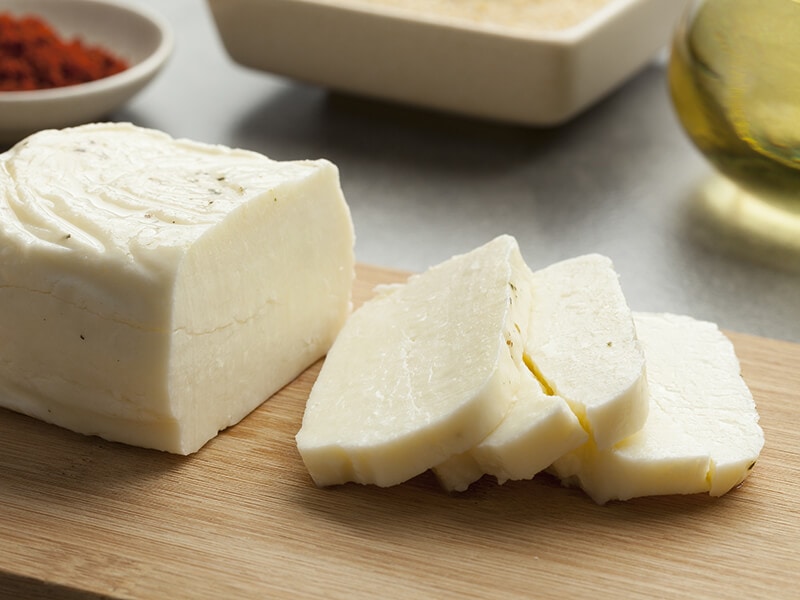
8. Cottage Cheese
Cottage cheese is a fresh cheese made from the curbs of cows’ milk. Unlike other cousins, its production doesn’t involve any ripening or maturation process to develop the taste. Instead, its flavor comes from other ingredients, such as salt or cream.
Cottage cheese is not only healthy but also an ideal choice for salads. Its creamy and slightly salty flavors and crumbly texture easily team up well with various vegetables, fruits, nuts, spices, and even pickles.
The most common way is to incorporate cottage cheese into a tomato and cucumber salad. Cutting the cheese into small cubes before adding it will bring about the best result for your dish.
In terms of nutrition, it contains high protein and nutrient amounts and fewer calories. As a result, it may contribute to several positive impacts on bones, muscle gain, heart disease prevention, and insulin resistance reduction(2).
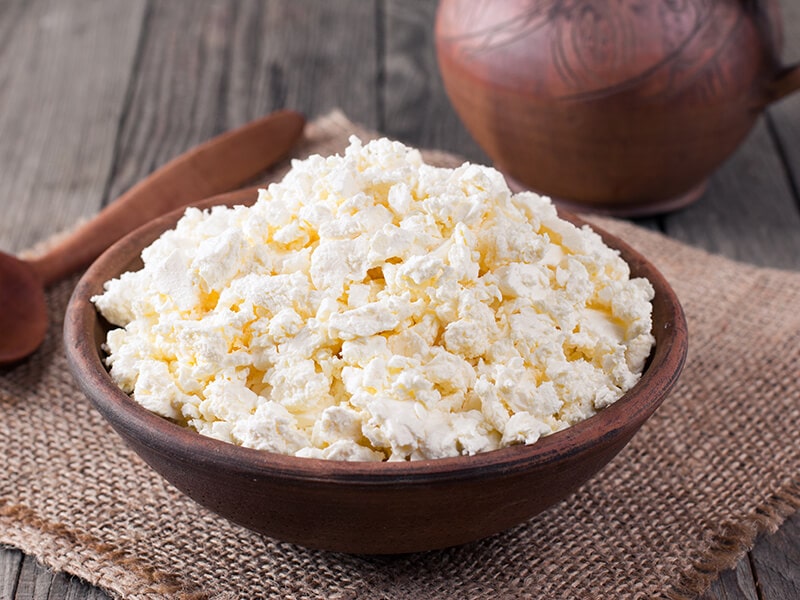
9. Ricotta Cheese
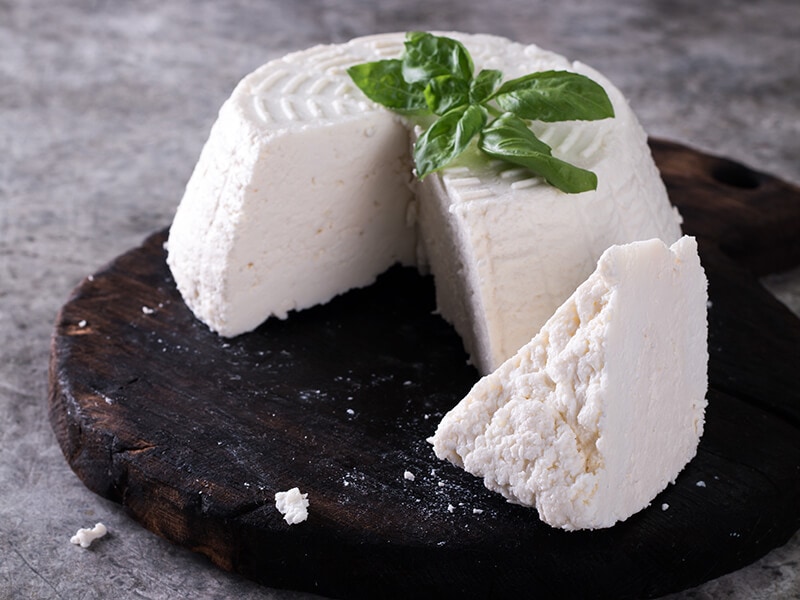
Ricotta cheese is a by-product made from the milk of sheep, goats, cows, or water buffaloes. Thanks to its mild and slightly salty flavors, this cheese is a perfect addition to sweet and savory dishes. For example, tomato salad will benefit most from the taste of ricotta cheese.
In addition, it’s also widely used in numerous Italian dishes, such as lasagna, pizza, manicotti, dips, and cheesecake. If you want to try it as a milk alternative for breakfast, the mixture of ricotta cheese, coffee, and cocoa powder can be a great way to start your productive day.
Let’s make your ricotta cheese at home with this thorough instruction.
10. Cheddar
If you want to add cheese to your green salads, cheddar is undoubtedly a perfect addition. Thanks to its slightly buttery and melty texture, this cheese can go well with English pea salad and other ingredients in your dishes, such as tomatoes, cucumbers, and lettuce.
In terms of flavor, cheddar is often described as having a sharp taste. While this characteristic seems to limit its use in salads, it really shines in pasta salads, particularly a macaroni salad. Grated cheddar will work best in these dishes.
When using cheddar in your salads, you should add it sparingly to avoid it intensely impacting the flavor of other ingredients. You can also combine this cheese with others, like Parmesan, to get a better texture and taste.
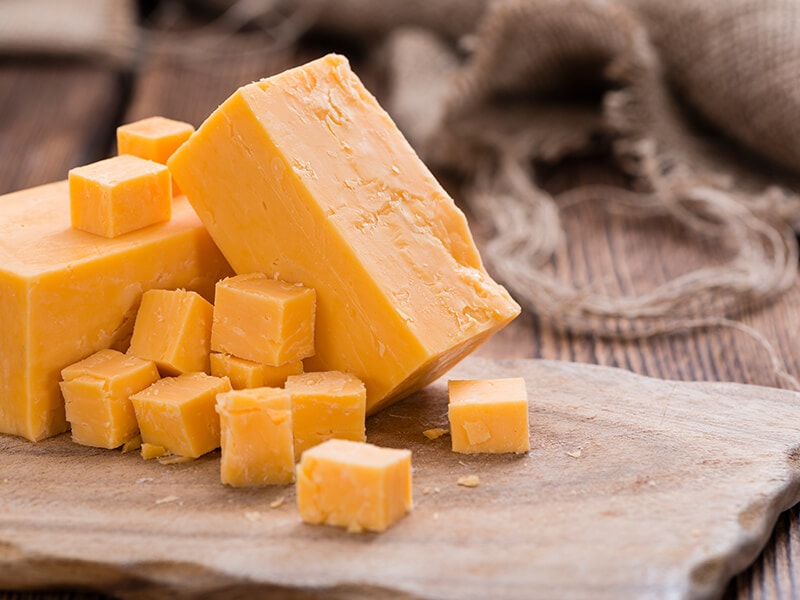
11. Goat Cheese
As the name suggests, this cheese is made from goat milk. For this reason, goat cheese has less lactose than cheese made from cows’ milk. This makes goat cheese an easier and safer choice for people with lactose intolerance.
The flavor of goat cheese is quite complex. However, it’s often described as having tangy, earthy, and sour tastes. This makes it an ideal choice to add flavors to your salads, such as apple and arugula salad and spinach salad.
The high melting point of goat cheese is also a great advantage. You can grill it to enhance its flavor before serving it with your dish.
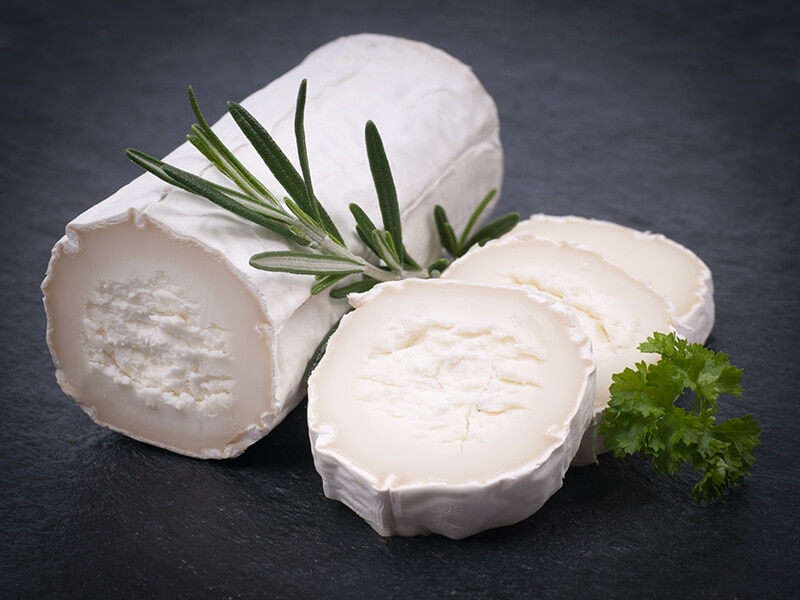
How To Store Your Cheese Like A Pro
Like other food, the cheese will be bad someday. Understanding how long it lasts and learning tips will help you more properly store your cheese.
How Long Cheese Lasts
The shelf life of cheese varies significantly from type to type. However, soft cheeses tend to spoil faster than their hard counterparts.
Storing In A Fridge
Here are the estimated storage times of each variety in a fridge (3):
Soft cheeses: goat cheese, feta, mozzarella, blue cheese, ricotta cheese, cottage cheese
- 1 week after opening
- 2 weeks for cream cheeses
Hard cheeses: Parmesan, Gouda, Swiss cheese, cheddar and halloumi (semi-hard)
- 3-4 weeks after opening
- 6 months for unopened packages
- 1 month after opening for shredded hard
Storing In A Freezer
Here are the estimated storage times of each variety in a freezer:
- Not freezing well: ricotta, cottage cheese
- 6 months for other frozen cheeses
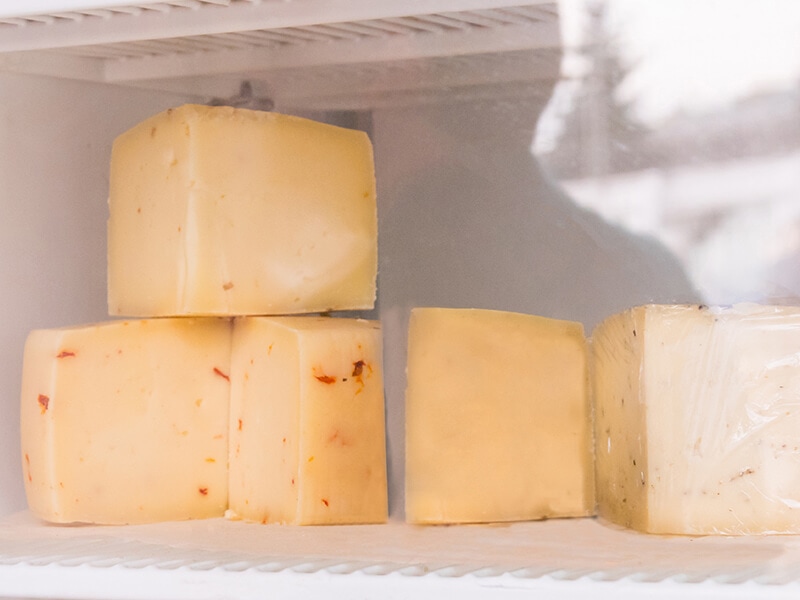
Tips And Tricks To Storage Cheese
There are several tips you can follow to preserve your cheese better. Below are some suggestions for storing cheese:
- Calculate and buy just enough cheese for your salads or other dishes.
- Wrap your cheese in waxed or parchment paper and put it in a container.
- Put 1-2 small sugar cubes into your container to absorb moisture and keep your cheese fresh.
- Keep your cheese in places that have stable temperatures, such as a crisper drawer in your fridge.
- Before using, take your cheese out of the fridge and leave it for an hour.
- After taking your cheese out of the fridge, re-wrap it in fresh paper and put it back.
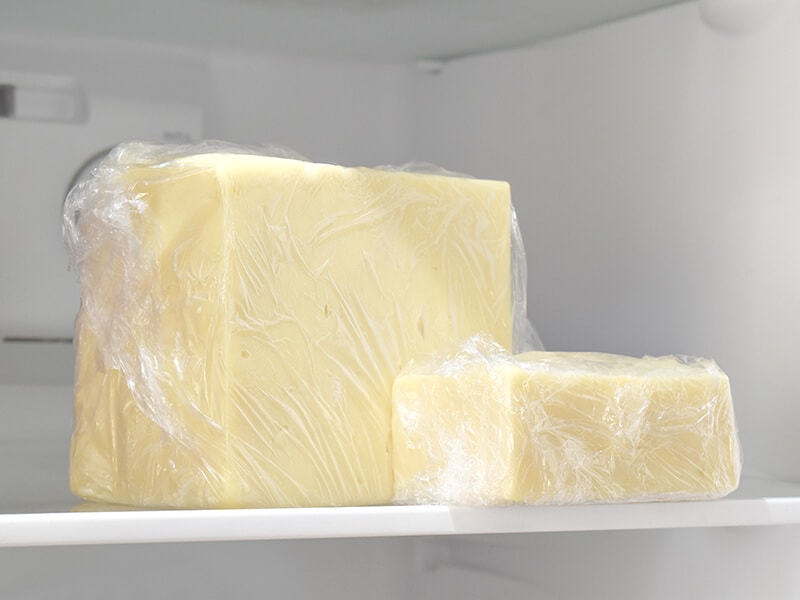
Deliciously Simple Cheese Salad Recipes
These are some of the best cheese salad recipes that you should take a look at. You can also try preparing some of these for your family after finishing this article.
Summer Peach Spinach Salad
If you are looking for a fresh and tasty cheese salad, you should give this recipe a go. The tasty combination of blue cheese, spinach, peaches, avocado, almonds, and red onion will make for a perfect lunch. You can swap peaches for strawberries and blue cheese for feta.
Make your simple but delicious summer peach salad with this comprehensive video.
Steak Blue Cheese Avocado Salad
For meat lovers, this recipe for a salad with blue cheese should be on your list. Along with the main ingredients, you can add some greens, such as arugula, spinach, and chard. The taste of seared steak complemented by fresh vegetables and avocado is just so satisfying.
Loaded Cauliflower Salad
This salad is a bit time-consuming, but the ingredients of this recipe are very accessible. All you need to prepare are cheddar, cauliflower, bacon slices, sour cream, lemon juice, and other spices. If you want to go vegan, you can also skip bacon for other alternatives.
FAQs
These are other questions about cheese and salad that you may want to ask. They take a while but are worth a read as well. Now, let’s take a look.
Don’t Just Try One Kind Of Cheese!
At this time, you have already figured out the right choices for your dishes. You may want to use a certain cheese for a certain salad repeatedly. It’s understandable. But how about experimenting with other kinds of cheese?
Don’t let your cautiousness limit the taste of your dishes. Next time, your salad with cheese can be even tastier than this time. Feel free to share that experience with me in the comment section below. It’ll be helpful if you share the post too!
References
- Cheese (no date) Eidgenössisches Departement für auswärtige Angelegenheiten EDA.
- Semeco, A. (2019) Why cottage cheese is super healthy and nutritious, Healthline. Healthline Media.
- (no date) ASKUSDA.

